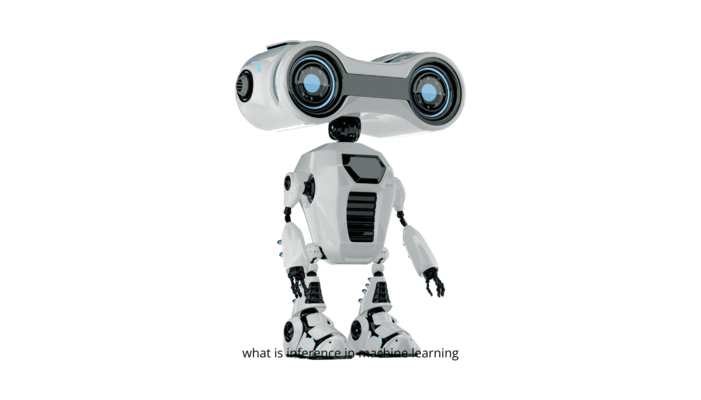Within the endless scene of machine learning, deduction plays a significant part, in what is inference in machine learning, serving as the spine for decision-making and prescient analytics. Understanding induction is pivotal for tackling the control of machine learning calculations viably.
Presentation to Induction in Machine Learning
Deduction, within the setting of machine learning, alludes to the method of finding experiences, designs, or conclusions from information. It includes extricating significant data from watched information to create expectations or draw conclusions around inconspicuous or future occurrences. It bridges the crevice between crude information and noteworthy bits of knowledge.
Significance of Deduction
Deduction is the foundation of making sense of information in different spaces, counting funds, healthcare, promoting, and more. It empowers businesses and analysts to extricate important experiences, make educated choices, and optimize forms. What is Inference in Machine Learning? By revealing covered-up designs and connections inside information, induction enables organizations to pick up a competitive edge and drive development.
Sorts of Induction in Machine Learning
Measurable Induction
Measurable deduction includes making inductions around a populace based on a test of information. It includes strategies such as theory testing, certainty interims, and relapse investigation to conclude parameters or dissemination.
Probabilistic Induction
Probabilistic deduction rotates around assessing the probability of diverse results given watched information. It utilizes likelihood conveyances and Bayesian strategies to evaluate instability and make forecasts based on probabilistic models.
Deduction Strategies and Calculations or What is Inference in Machine Learning
Different strategies and algorithms are utilized in machine learning for conducting inference tasks:
Greatest Probability Estimation (MLE)
MLE may be a prevalent strategy utilized for assessing the parameters of a measurable show. It looks to discover the parameter values that maximize the probability of watching the given information.
Bayesian Deduction
Bayesian induction is established in the Bayesian likelihood hypothesis, which upgrades convictions approximately parameters based on earlier information and watched information. What is Inference in Machine Learning? It gives a principled system for joining instability into expectations and decision-making.
Markov Chain Monte Carlo (MCMC)
MCMC calculations, such as Gibbs examining and Metropolis-Hastings, are utilized for examining complex likelihood disseminations. They empower inexact induction in models with high-dimensional or unmanageable back conveyances.

Part of Induction in Demonstrate Preparing
Within the realm of machine learning, the method of show preparation is intrinsically interlaced with the concept of induction. Induction plays an essential part in different stages of the preparing pipeline, from parameter estimation to assessment and approval, forming the execution and generalization capabilities of machine learning models.
Evaluating Show Parameters
At the heart of show preparation lies the assignment of evaluating show parameters from watched information. Induction methods such as most extreme probability estimation (MLE) and Bayesian induction are utilized to iteratively update model parameters based on preparing information, looking to play down the inconsistency between demonstrating expectations and watching results.
Assessing Demonstrate Execution
Deduction is fundamental for assessing the execution of prepared models on inconspicuous information. By applying learned parameters to unused occasions and comparing show expectations to ground truth names, induction empowers specialists to evaluate the precision, exactness, review, and other execution measurements of machine learning models. What is Inference in Machine Learning?
Iterative Optimization
Amid the preparation preparation, induction strategies are utilized to iteratively optimize show parameters and minimize the misfortune work. Through methods such as angle plunge and stochastic slope plunge, induction calculations alter show parameters within the direction that diminishes forecast mistakes, leading to progressed show execution over time.
Regularization and Hyperparameter Tuning
Deduction plays a pivotal part in regularization and hyperparameter tuning, which are basic for anticipating overfitting and optimizing demonstrate execution. Methods such as L1 and L2 regularization, cross-validation, and lattice look depend on deduction to discover the ideal adjustment between demonstrate complexity and generalization capability.
Show Interpretability and Explainability
Deduction strategies contribute to the interpretability and explainability of machine learning models by giving experiences into the basic connections between highlights and target variables. What is Inference in Machine Learning? By analyzing learned parameters and highlighting significance scores, professionals can pick up a more profound understanding of show behavior and distinguish persuasive components driving expectations.

Versatile Learning and Exchange Learning
Induction strategies empower versatile learning and exchange learning, where information picked up from one errand or space is utilized to progress execution on related errands or spaces. Professionals can quicken learning and upgrade demonstrates strength by deducing idle representations and transferable information from pre-trained models.
Challenges and Restrictions of Deduction
In showing disdain toward its basic significance, deduction in machine learning experiences a few challenges and impediments that can prevent its adequacy and unwavering quality. What is Inference in Machine Learning? Understanding these challenges is vital for creating strong deduction strategies and tending to potential pitfalls in real-world applications.
Dealing with High-dimensional Information
One of the essential challenges in induction is managing high-dimensional information, where the number of highlights or factors surpasses the test measure. In such scenarios, conventional induction strategies may battle to precisely gauge parameters or make solid forecasts due to the revile of dimensionality.
Managing Loud or Fragmented Information
Real-world datasets are frequently tormented by clamor, exceptions, and lost values, posturing challenges for induction calculations. Loud information can mutilate measurable gauges and lead to incorrect conclusions, whereas lost information can present an inclination and diminish the adequacy of prescient models.
Tending to Demonstrate Predisposition and Fluctuation
Another challenge in deduction is finding the correct adjustment between show predisposition and fluctuation. A show with a tall predisposition may oversimplify the basic connections within the information, leading to underfitting, while a show with tall fluctuation may capture clamor within the preparing information, resulting in overfitting.
Deciphering Complex Models
As machine learning models ended up progressively complex, deciphering their expectations and understanding their basic instruments got to be more challenging. Black-box models such as profound neural systems may give exact forecasts but offer restricted interpretability, making it troublesome to believe and clarify their choices.
Measuring and Overseeing Vulnerability
Instability evaluation may be an essential viewpoint of deduction, however precisely measuring and overseeing vulnerability remains an overwhelming errand. Probabilistic models offer a principled system for capturing vulnerability, but translating and communicating probabilistic expectations can be challenging for non-experts.
Scaling Induction to Enormous Information
With the multiplication of enormous information, scaling deduction calculations to huge datasets poses noteworthy computational and calculated challenges. What is Inference in Machine Learning? Conventional induction strategies may battle to handle the volume, speed, and assortment of information experienced in real-world applications, requiring adaptable and parallelizable calculations.
Adjusting Investigation and Abuse
In reinforcement learning and successive decision-making errands, adjusting investigation (i.e., attempting out modern activities) and misuse (i.e., leveraging known information) is significant for accomplishing optimal performance. Planning deduction calculations that strike the proper adjustment between investigation and abuse remains a progressing inquiry challenge.
Conclusion
Deduction serves as the bedrock of machine learning, empowering data-driven decision-making and proactive analytics. By leveraging measurable and probabilistic strategies, induction enables organizations to extricate experiences, moderate vulnerability, and drive advancement in a progressively data-driven world.
FAQs
What is the distinction between deduction and expectation in machine learning?
Deduction includes finding experiences or conclusions from information, while forecast centers on determining future results based on watched information.
How does induction contribute to the interpretability of machine learning models?
Deduction strategies such as Bayesian deduction give interpretable gauges of vulnerability, encouraging show elucidation and decision-making.
Can you give an illustration of measurable induction in machine learning?
A case of factual induction is evaluating the cruelty and change of a populace based on a test of information utilizing methods such as speculation testing or certainty interims.
What are a few common challenges confronted in actualizing induction strategies?
Challenges incorporate taking care of high-dimensional information, tending to show inclination and fluctuation, managing loud or fragmented information, and deciphering complex models.
How does induction affect decision-making in AI frameworks?
Deduction empowers AI frameworks to make educated choices, evaluate instability, and adjust to changing conditions, in this manner improving their adequacy in real-world applications.

